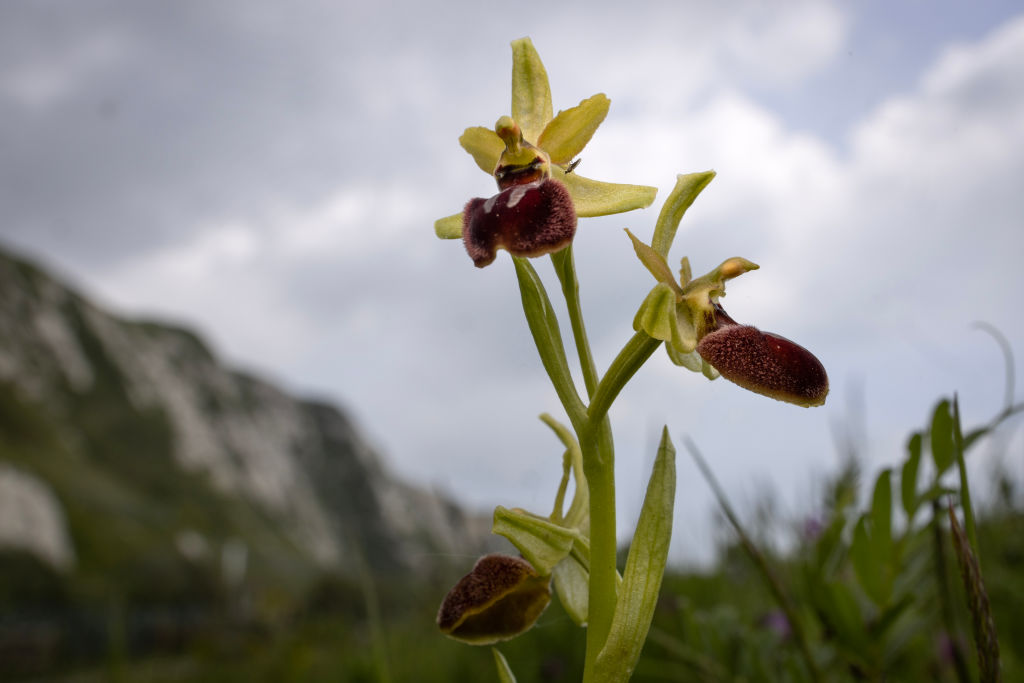Summary of Fungal Necromass: A Key To Unlocking Carbon Flow in Plant-Fungal Symbiosis:
Plants and fungi have a complex relationship ranging from mutualism to parasitism. Some plants form symbiotic associations with fungi, called mycorrhiza, in which the fungi help the plants absorb nutrients while the plants provide carbon. However, some plants exploit their fungal partners and extract more carbon than they give, known as mycoheterotrophs. Measuring the amount of carbon plants obtain from fungi is challenging but essential for studying plant-fungal interactions and their implications for carbon cycling and climate change. A new method based on compound-specific isotope analysis has been developed to overcome this limitation. The method measures the isotopic composition of fungal-specific molecules in plant tissue, providing insights into plant-fungal symbiosis without requiring fungal samples. The method can potentially study different plant-fungal symbioses, measure other elements exchanged between plants and fungi, and understand how symbiosis responds to environmental changes. It is faster, cheaper, more accurate, and less invasive than conventional methods, contributing to the conservation of plant-fungal biodiversity and ecosystem functioning.
1. Fungal necromass is crucial in carbon flow in plant-fungal symbiosis.
2. Plants and fungi have a complex relationship, ranging from mutualism to parasitism.
3. Mycoheterotrophs are plants that extract carbon from fungi without performing photosynthesis.
4. Isotope analysis measures the amount of carbon plants obtain from fungi.
5. A novel method based on compound-specific isotope analysis allows unrestricted analysis of plant-fungal symbiosis.
6. The method measures the isotopic composition of ergosterol, a molecule found only in fungi.
7. The new method is faster, cheaper, more accurate, and less invasive than conventional methods.
8. It can be used to study the diversity and dynamics of plant-fungal symbiosis across different ecosystems.
9. The method can also reveal how plant-fungal symbiosis responds to environmental changes.
The world of plants and fungi is fascinating and intricate, filled with complex relationships and interactions. From mutualistic partnerships to parasitic exploits, plants, and fungi have coexisted for millions of years, shaping the ecosystems in which they thrive. One aspect of this relationship that has garnered much attention is the flow of carbon between plants and fungi. Understanding how plants extract carbon from fungi is essential for unraveling the mysteries of plant-fungal symbiosis and its implications for carbon cycling and climate change.
In many cases, plants form symbiotic associations with fungi, known as mycorrhiza, in which the fungi help the plants absorb nutrients and water from the soil while the plants provide the fungi with organic carbon. This mutualistic relationship is vital for both parties, ensuring their survival and growth. However, not all plants play fair when it comes to this partnership.
Some plants, known as mycoheterotrophic, exploit their fungal partners, extracting more carbon than they give or even feeding exclusively on fungal carbon without performing photosynthesis. These intriguing plants have fascinated scientists for years as they challenge our understanding of plant metabolism and nutrient acquisition.
Studying the carbon flow between plants and fungi is no easy task. Traditional methods have relied on isotope analysis, which detects differences in the abundance of carbon atoms with different numbers of neutrons in their nuclei. However, these methods have been limited by the availability of fungal samples that can be used as reference values.
Most fungi do not produce fruiting bodies that can be easily collected and analyzed. Extracting fungal tissue from plant roots is also challenging and unreliable. These limitations have hindered our ability to accurately measure the amount of carbon that plants obtain from fungi.
Fortunately, a team of researchers led by Prof. Dr. Gerhard Gebauer at the University of Bayreuth has developed a groundbreaking solution. They have developed a novel method that allows unrestricted isotope analysis of all types of plant-fungal symbiosis. Their method is based on compound-specific isotope analysis (CSIA), which can measure the isotopic composition of individual molecules within a complex mixture.
The researchers focused on a specific molecule called ergosterol, a sterol found only in fungi and not in plants. Ergosterol is an essential component of fungal cell membranes and can be extracted from plant tissues using organic solvents. By measuring the isotopic composition of ergosterol, the researchers could determine the isotopic profile of fungal carbon without isolating fungal tissue.
To validate their method, the researchers applied it to various plant-fungal symbioses, including orchids, heaths, grasses, and ferns. They compared the isotopic composition of ergosterol with that of bulk plant tissue and found significant differences in most cases. This difference indicated that the plants obtained carbon from fungi, and the amount of fungal carbon varied among plant species and habitats.
The researchers also compared their method with conventional methods that use fungal fruiting bodies or root samples as reference values. They found that their method produced consistent and reliable results that agreed well with previous studies. This breakthrough opens up new possibilities for studying the diversity and dynamics of plant-fungal symbiosis across different ecosystems and scales.
The advantages of this new method are numerous. It is faster, cheaper, more accurate, and less invasive than conventional methods. It does not require collecting or destroying rare or endangered fungal samples. It also does not require growing plants or fungi under controlled conditions, which can alter their natural isotopic profiles.
With this new method, researchers can gain insights into how plants feed on fungi and how this affects their physiology, ecology, and evolution. It can also show how plant-fungal symbiosis responds to environmental changes such as climate change, land use change, or pollution. Ultimately, this knowledge can contribute to a better understanding and conservation of plant-fungal biodiversity and ecosystem functioning.
The study of plant-fungal symbiosis is an ever-evolving field, constantly revealing new insights and opening doors to further research. The discovery of this novel method based on compound-specific isotope analysis is just one example of how scientists push our knowledge’s boundaries. By unraveling the intricate mechanisms behind plant-fungal interactions, we can better appreciate the complex web of life in the natural world.


